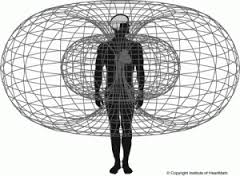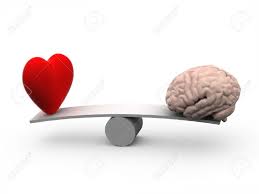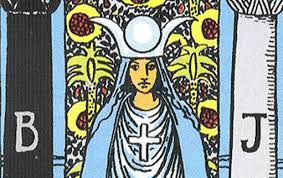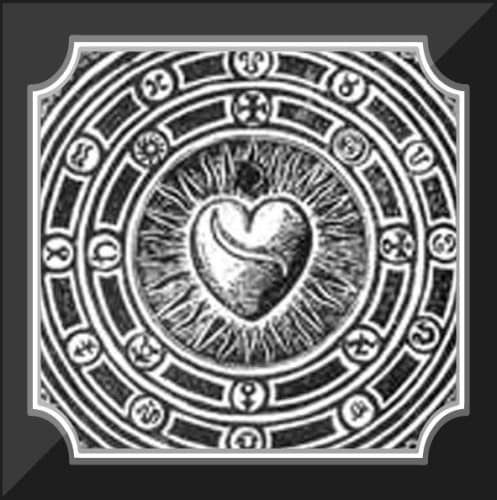(To celebrate the today’s celestial alignment between Earth, Mercury and Sun/Vulcan – analogically the brain thinking and that of the Heart – we publish “Heart and Brain” of Réné Guénon*, attributed here to the category “Ideals/Values” for its illuminating dissertation on the relationship between the Heart and the Brain – the pictures are by the editorial staff TPS)
“The Review Vers l’Unité (July-August and September-October 1926) contains a study under the signature of Mme Th. Darel in which are certain observations that are in some respects close to what we ourselves have had occasion to expound. Some reservations might be made about certain expressions that appear to lack the requisite precision, but we do not think it will be any the less interesting to reproduce several passages from the study:
If there is an essential movement, it is that which makes of man a vertical being, of voluntary stability, a being whose impulses toward the ideal, whose prayers, whose noblest and purest sentiments rise like incense toward heaven. Of this creature, the Supreme Being made a temple within the Temple, and for that purpose endowed him with a heart, that is, an immutable fulcrum, a center of movement making man adequate to his origins, similar to his First Cause. At the same time, it is true, man was provided with a brain; but this brain, whose innervation is a characteristic of the entire animal kingdom, is de facto subject to a secondary movement [with respect to the initial movement]. The brain, instrument of the thought enclosed within the world and transformer of this latent thought for the use of man and of the world, thus makes it realizable by its mediation. But the heart alone, by a secret aspiration and expiration, allows man, while remaining united to his God, to be living thought. Thus, thanks to this royal pulsation, man preserves his promise of divinity, and acts under the aegis of his Creator, careful to obey his law, happy with a blessedness that belongs uniquely to him, to ravish himself from himself, in turning to the secret way that leads from his heart to the Universal Heart, to the Divine Heart…. Relapsing to the level of animality, however exalted he may have the right to call it, man henceforth has only the use of the brain and its structures. So doing, he lives only by its transformative possibilities; he lives by the latent thought spread throughout the world; but it is no longer in his power to be living thought. Nevertheless, religions, saints, even monuments raised under the sign of a spiritual ordination now disappeared, speak to man of his origin and of the privileges attached thereto. Little as he may wish it, his attention, centered exclusively on the needs inherent in his relative state, may be exercised in order to re-establish equilibrium within, to recover blessedness…. The excess of his deviations leads man to recognize their inanity. Breathless, here he is, who by an instinctive movement falls back upon himself, takes refuge in his own heart and, timidly, tries to descend into its silent crypt. There, the vain noises of the world are quieted. If some are still to be heard, it is because the silent depth has not yet been reached, the august threshold has not yet been crossed…. World and man are one. And the Heart of man, the Heart of the world are one single Heart.
Here our readers will rediscover without difficulty the idea of the heart as center of the being, an idea that, as we have explained (and we shall return to it again), is common to all ancient traditions, having arisen from the primordial tradition, the vestiges of which are still to be met with everywhere by whomsoever knows how to see them. They will also rediscover the idea of the fall that cast man far from his original center and interrupted for him direct communication with the ‘Heart of the World’ such as was established in a normal and permanent manner in the Edenic State. (1) Finally, as regards the central role of the heart, they will rediscover the centripetal and centrifugal double movement, comparable to the two phases of respiration.(2) It is true that in the passage that we are now going to cite the duality of these movements is related to that of the heart and the brain, which seems at first glance to introduce some confusion, although it too can be upheld from a somewhat different point of view, where heart and brain are considered as somehow constituting two poles in the human being:
In man, the centrifugal force has the Brain for its organ, and the centripetal force the Heart. The Heart, seat and preserver of the initial movement, is represented in the corporeal organism by the diastolic and systolic movements which continuously bring the blood, generator of physical life, back to its propelling organ, and expel it again to irrigate the field of its action. But the Heart is something else again. Just as the sun keeps the secret of its mystical royalty while spreading emanations of life, the Heart assumes subtle functions not discernible by him who is hardly inclined toward the profound life and who has not concentrated his attention on the inner kingdom of which he is the Tabernacle….  The Heart, in our understanding, is the seat and the preserver of cosmic life. The religions that have made a sacred symbol of the Heart know this, as did the builders of cathedrals who erected the holy place at the heart of the Temple. They also knew it, who, the most ancient traditions, in the most secret rites, withdrew from discursive intelligence, imposed silence on their brain in order to enter into the Sanctuary and there to raise themselves beyond their relative being to the Being of being. This parallelism of the Temple and the Heart brings us back to the double mode of movement which, on the one hand [vertical mode], raises man beyond himself and disengages him from the process proper to manifestation and, on the other [horizontal or circular mode], has him participate in this manifestation in its entirety.
The Heart, in our understanding, is the seat and the preserver of cosmic life. The religions that have made a sacred symbol of the Heart know this, as did the builders of cathedrals who erected the holy place at the heart of the Temple. They also knew it, who, the most ancient traditions, in the most secret rites, withdrew from discursive intelligence, imposed silence on their brain in order to enter into the Sanctuary and there to raise themselves beyond their relative being to the Being of being. This parallelism of the Temple and the Heart brings us back to the double mode of movement which, on the one hand [vertical mode], raises man beyond himself and disengages him from the process proper to manifestation and, on the other [horizontal or circular mode], has him participate in this manifestation in its entirety.
We had found the comparison of the Heart and the Temple here alluded to emphasized more particularly in the Hebrew Kabbalah,(3) and as we have indicated previously, the expressions of certain medieval theologians likening the Heart of Christ to the Tabernacle or to the Ark of the Covenant(4) can be linked to this. As for the vertical and horizontal movement on the other hand, this is comparable to one aspect of the symbolism of the cross developed especially in certain schools of Islamic esoterism, of which we shall perhaps speak some-day.(5) In fact, this symbolism is discussed in the remainder of the same article, and from it we shall take one last quotation, the beginning of which may be compared to what we have said6 about symbols of the center, the cross in a circle, and the swastika.(6)
The Cross is the cosmic sign par excellence. As far back as we are able to go in time, the Cross represents that which unites the vertical and the horizontal in their double significance; it makes the movement that is proper to them participate in a single center, a single generator…. How can we not grant a metaphysical meaning to a sign susceptible of responding so completely to the nature of things? In order to become the almost exclusive symbol of divine crucifixion, the Cross had only to accentuate its sacred significance. Indeed, if from the beginning this sign represented the relationship of the world and of man with God, it became impossible not to identify Redemption with the Cross, not to nail on the Cross the Man whose Heart is in the highest degree representative of the divine in a world forgetful of that mystery. Were we to make an exegesis here, it would be easy to show to what extent the Gospels and their profound symbolism are significant in this regard. Christ is more than a fact, more than the great Fact of two thousand years ago. His figure is for all the ages. It bursts forth from the tomb wherein relative man descends, to resurrect incorruptible in the divine Man, in the Man redeemed by the universal Heart which beats in the Heart of Man, whose blood is shed for the salvation of man and of the world.
The last remark, although expressed in somewhat obscure terms, agrees fundamentally with what we have said about the symbolic value of historical facts, and especially the facts of sacred history,(7) apart from their own reality as facts and, of course, without that reality being in any way affected; but at present we do not propose to dwell on these considerations. What we wish to do, taking advantage of the opportunity furnished by these quotations, is to return to the question of the relationships between the heart and the brain, or the faculties represented by these two organs. We have already given some attention to this subject (8) but we think it will be useful to develop it somewhat further.
We have just seen that in a sense one can consider the heart and the brain as two poles, that is, as two complementary elements. This point of view of complementarism does in fact correspond to a reality of a certain order, at a certain level so to speak, one less outward and less superficial than that of opposition pure and simple, which, however, also contains a portion of the truth, but only if one holds to the most immediate appearances. With the consideration of complementarism, the opposition is already reconciled and resolved, at least to a certain point, its two terms as it were balancing one another. However, this point of view is still insufficient by the very fact that in spite of everything it allows a duality to subsist: to say that there are in man two poles or two centers, between which there may moreover be antagonism or harmony as the case may be, is true when man is considered in a certain state; but is it not a state that could be called ‘uncentered’ or ‘disunited’ and that, as such, properly characterizes only fallen man, who, as we said above, is thus separated from his original center? 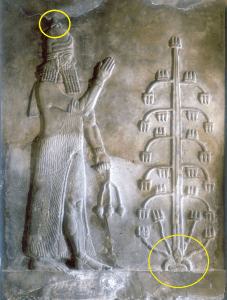 It is at the very moment of the fall that Adam becomes ‘knowing good and evil’ (Gen. 3:2), that is, begins to consider all things under the aspect of duality; the dual nature of the ‘Tree of Knowledge’ appears to him when he finds himself cast out of the place of the initial unity, to which the ‘Tree of Life’ corresponds.(9)
It is at the very moment of the fall that Adam becomes ‘knowing good and evil’ (Gen. 3:2), that is, begins to consider all things under the aspect of duality; the dual nature of the ‘Tree of Knowledge’ appears to him when he finds himself cast out of the place of the initial unity, to which the ‘Tree of Life’ corresponds.(9)
However this may be, it is certain that if duality really exists in the being, this can only be from a contingent and relative point of view; if we place ourselves at a deeper and more essential point of view, or if we consider the being in the state corresponding to this, then the unity of this being is found to be re-established.(10) From that point, the relationship between the two elements which at first appeared to be in opposition, and then complementary, becomes something else: it is a relationship, no longer of correlation or of coordination, but of subordination. The two terms of this relationship can then no longer be placed on the same plane, as if there was a kind of equivalence between them; on the contrary, the one depends upon the other as having its principle therein, and such is indeed the case for what is represented respectively by the brain and the heart.
In order to make this dear, we shall return to the symbolism we have already mentioned,(11) according to which the heart is assimilated to the sun and the brain to the moon. Now the sun and the moon, or rather the cosmic principles represented by these two heavenly bodies, are often represented as complementary, and in fact they are so from a certain point of view; a certain parallelism or symmetry is then established between them, of which it would be easy to find examples in all traditions.  It is thus that Hermeticism makes of the sun and the moon (or of their alchemical equivalents, gold and silver) the image of the two principles, active and passive, or masculine and feminine according to another mode of expression, which are indeed the two terms of a true complementarism.(12) Moreover, if one considers appearances in our world, as is legitimate to do, the sun and moon indeed have comparable and symmetrical roles, being, according to the biblical expression, the ‘two great lights, the greater light to rule the day, and the lesser light to rule the night’ (Gen. 1:6); and certain Far-Eastern languages (Chinese, Vietnamese, Malay) designate them by terms which likewise are symmetrical, meaning ‘eye of the day’ and ‘eye of the night’. Nevertheless, if one goes beyond appearances it is no longer possible to maintain this kind of equivalence, since the sun is by itself a source of light, while the moon only reflects the light it receives from the sun.(13) Lunar light is really only a reflection of the solar light; one could therefore say that the moon, as ‘luminary’, exists only by the sun.
It is thus that Hermeticism makes of the sun and the moon (or of their alchemical equivalents, gold and silver) the image of the two principles, active and passive, or masculine and feminine according to another mode of expression, which are indeed the two terms of a true complementarism.(12) Moreover, if one considers appearances in our world, as is legitimate to do, the sun and moon indeed have comparable and symmetrical roles, being, according to the biblical expression, the ‘two great lights, the greater light to rule the day, and the lesser light to rule the night’ (Gen. 1:6); and certain Far-Eastern languages (Chinese, Vietnamese, Malay) designate them by terms which likewise are symmetrical, meaning ‘eye of the day’ and ‘eye of the night’. Nevertheless, if one goes beyond appearances it is no longer possible to maintain this kind of equivalence, since the sun is by itself a source of light, while the moon only reflects the light it receives from the sun.(13) Lunar light is really only a reflection of the solar light; one could therefore say that the moon, as ‘luminary’, exists only by the sun.
What is true for the sun and the moon is true also for the heart and the brain, or better still, for the faculties to which these two organs correspond and which they symbolize, that is to say intuitive intelligence and discursive or rational intelligence. The brain, as organ or instrument of this latter, only plays a role as ‘transmitter’ and, we might say, as ‘transformer’; and it is not without reason that the word ‘reflection’ is applied to rational thought, by which things are seen only as in a mirror, quasi per speculum, as St Paul said. Nor is it without cause that the same root man or men has served in 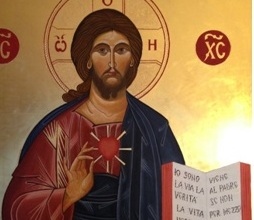 different languages to form numerous words designating on the one hand the moon (Greek mene, English moon, German mond),(14) and on the other hand the rational or ‘mental’ faculty (Sanskrit, manas, Latin, mens, English mind),(15) and also, in consequence, man considered more particularly in his rational nature by which he is specifically defined (Sanskrit mànava, English man, German mann and mensch).(16) Reason, in fact, which is only a faculty of mediate knowledge, is the properly human mode of intelligence; intellectual intuition may be said to be supra-human since it is a direct participation in universal intelligence, which, residing in the heart, that is, at the very center of the being wherein lies its point of contact with the Divine, penetrates this being from within and illuminates it with its radiation.
different languages to form numerous words designating on the one hand the moon (Greek mene, English moon, German mond),(14) and on the other hand the rational or ‘mental’ faculty (Sanskrit, manas, Latin, mens, English mind),(15) and also, in consequence, man considered more particularly in his rational nature by which he is specifically defined (Sanskrit mànava, English man, German mann and mensch).(16) Reason, in fact, which is only a faculty of mediate knowledge, is the properly human mode of intelligence; intellectual intuition may be said to be supra-human since it is a direct participation in universal intelligence, which, residing in the heart, that is, at the very center of the being wherein lies its point of contact with the Divine, penetrates this being from within and illuminates it with its radiation.
Light is the most common symbol of knowledge, so that it is natural that solar light represent direct knowledge, that is, intuitive knowledge, which is that of pure intellect, and that lunar light represent reflective knowledge, that is, discursive knowledge, which is that of reason. As the moon can only give its light when it is itself illuminated by the sun, so likewise reason, within the order of reality that is its own proper domain, can function validly only under the guarantee of principles which enlighten and direct it, and which it receives from the higher intellect. On this point there is an ambiguity which it is important to dispel: modern philosophers(17) strangely deceive themselves in speaking as they do of ‘rational principles; as if these principles belonged by right to reason, as if they were in some way its production, whereas in order to govern reason they must on the contrary impose themselves upon it, and thus come from above. This is an example of the rationalist error, and one can thereby understand the essential difference that exists between rationalism and true intellectuality. One need reflect but a moment to understand that a principle in the true sense of the word, by the very fact that it cannot be drawn or deduced from something else, can only be grasped immediately, thus intuitively, and could not be the object of a discursive knowledge such as that which characterizes reason; to use Scholastic terminology, it is pure intellect that is habitus principiorum, whereas reason is only habitus conclusionum.
A further consequence results from the fundamental character of intellect and reason: intuitive knowledge, because it is immediate, is necessarily infallible in itself;(18) on the contrary, error can always creep into any knowledge that is only indirect or mediate, as is rational knowledge, and it can be seen thereby how wrong Descartes was in wishing to attribute infallibility to reason. This is what Aristotle expresses in these terms:
Among the properties of intelligence,(19) in virtue of which we attain to truth, there are some that are always true, and others that may lead to error. Reason is in this latter class; but the intellect is always in conformity with truth, and nothing is truer than the intellect. Now, principles being better known than demonstration, and every science being accompanied by reason, the knowledge of principles is not a science [but it is a mode of knowledge superior to scientific or rational knowledge, and constitutes metaphysical knowledge proper]. Besides, only the intellect is truer than science [or than reason, which builds up science]; thus principles derive from the intellect.(20)
And to better affirm the intuitive character of this intellect, Aristotle goes on to say: ‘One does not demonstrate principles, but one perceives their truth directly.’(21)
This direct perception of truth, this intellectual and supra-rational intuition, the simplest notion of which modern man seems to have lost, is true ‘knowledge of the heart; to use an expression frequently found in Eastern doctrines. Moreover, this knowledge is in itself something incommunicable; it is necessary to have ‘realized’ it, at least in a certain measure, to know what it truly is, and all that can be said about it gives only a more or less approximate but always inadequate idea of it. Above all, it would be an error to believe that the nature of such knowledge could be effectively understood by anyone who is content to look at it ‘philosophically’, that is, from outside, for it must never be forgotten that like all ‘profane learning’ philosophy is only a purely human or rational knowledge. On the contrary, ‘sacred science’; in the sense that we have used this term in our writings, is essentially based on supra-rational knowledge; and all that we have said about the use of symbolism and of the teaching contained therein is related to the means which the traditional doctrines place at the disposal of man to enable him to attain to that knowledge par excellence with regard to which all other knowledge, in the measure that it too has some reality, is only a more or less remote participation, a more or less indirect reflection, just as the light of the moon is only a pale reflection of that of the sun. ‘Knowledge of the Heart’ is the direct perception of the intelligible light, of that Light of the Word spoken of by St John in the prologue of his Gospel, that radiant Light of the ‘Spiritual Sun’ which is the true ‘Heart of the World’.”





